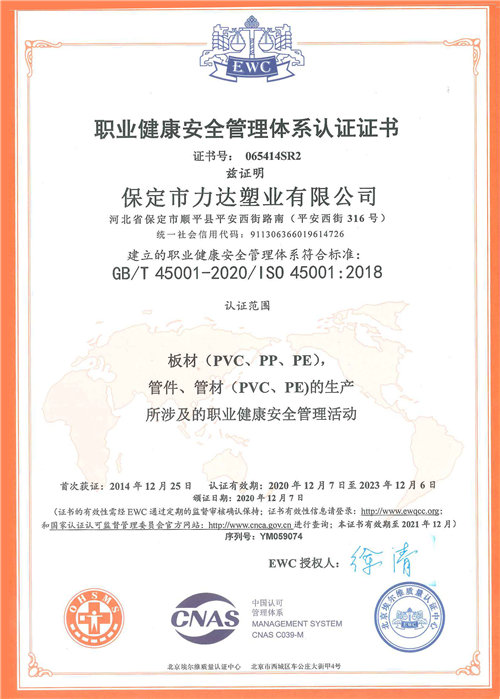ก.ย. . 15, 2024 23:18 Back to list
PPR Tube - Premium Quality Polypropylene Random Copolymer Tubing for Plumbing Solutions
Understanding PPR Pipes Benefits, Applications, and Features
PPR (Polypropylene Random Copolymer) pipes have emerged as a popular choice in various plumbing and construction applications due to their superior performance and versatility. Their unique structure and composition make them ideal for transporting hot and cold water, making them a preferred material for many engineers and contractors.
Composition and Characteristics
PPR pipes are made from polypropylene random copolymer, a type of thermoplastic that possess excellent chemical resistance, durability, and flexibility. One of the key characteristics of PPR pipes is their ability to withstand high temperatures and pressures, making them suitable for hot water supply systems. They can typically handle temperatures up to 95°C (203°F) and pressures up to 20 bar, which makes them a reliable choice for both residential and industrial applications.
Another significant advantage of PPR pipes is their lightweight nature. Compared to traditional materials such as metal or PVC, PPR is considerably lighter, which simplifies transportation and installation. Additionally, PPR pipes are non-toxic and do not leach harmful chemicals into the water supply, ensuring safety for drinking water applications.
Benefits of Using PPR Pipes
1. Corrosion Resistance Unlike metal pipes that are prone to rust and corrosion, PPR pipes do not corrode over time. This longevity reduces maintenance needs and replacement costs, making them a cost-effective option for long-term installations.
2. Thermal Insulation PPR pipes offer excellent thermal insulation properties. They help maintain the temperature of the fluids being transported, reducing energy loss and improving the efficiency of heating systems.
ppr tube

3. Ease of Installation The installation process for PPR pipes is straightforward. They can be easily welded together using a heat fusion technique, creating a seamless joint that enhances strength and minimizes leakage. This not only speeds up the installation process but also reduces the labor costs associated with plumbing projects.
4. Versatility PPR pipes are suitable for a wide range of applications, including residential plumbing, commercial buildings, industrial processes, and agricultural irrigation. Their versatility makes them a go-to choice for constructions of all types.
Applications
PPR pipes are widely used in plumbing systems for potable water supply and distribution in residential and commercial buildings. They are also employed in heating systems, such as underfloor heating, where their ability to withstand high temperatures is crucial. Additionally, PPR pipes find applications in industrial settings for chemical transportation, owing to their resistance to various chemicals.
In the agriculture sector, PPR pipes are gaining popularity for irrigation systems. Their durability and flexibility make them suitable for different terrains, ensuring efficient water distribution for crops.
Conclusion
In summary, PPR pipes represent a modern solution for piping systems, offering numerous advantages over traditional materials. Their combination of strength, lightweight, corrosion resistance, and ease of installation makes them an excellent choice for a variety of applications. As the demand for efficient and safe plumbing systems continues to grow, PPR pipes are sure to play a significant role in shaping the future of construction and plumbing industries. By choosing PPR, builders and homeowners alike can ensure reliable performance and longevity in their water supply systems.
-
PVC Transparent Sheet Roll - Durable & Flexible PVC Plastic Sheet Roll for Industrial & Home Use
NewsJun.24,2025
-
High-Quality PVC PPR Pipes and Fittings Durable ERA PPR Solutions
NewsJun.10,2025
-
High-Quality Large HDPE Sheets & Large Diameter PVC Pipe Durable Large PVC Pipe Supplier
NewsJun.10,2025
-
High Density Polyethylene Cutting Board - Durable & Food Safe
NewsJun.09,2025
-
3 Inch PVC Pipe for Durable Irrigation Affordable & Reliable
NewsJun.09,2025
-
Premium PPR Plastic Water Pipe Fittings - Durable & Leak-Free
NewsJun.09,2025

